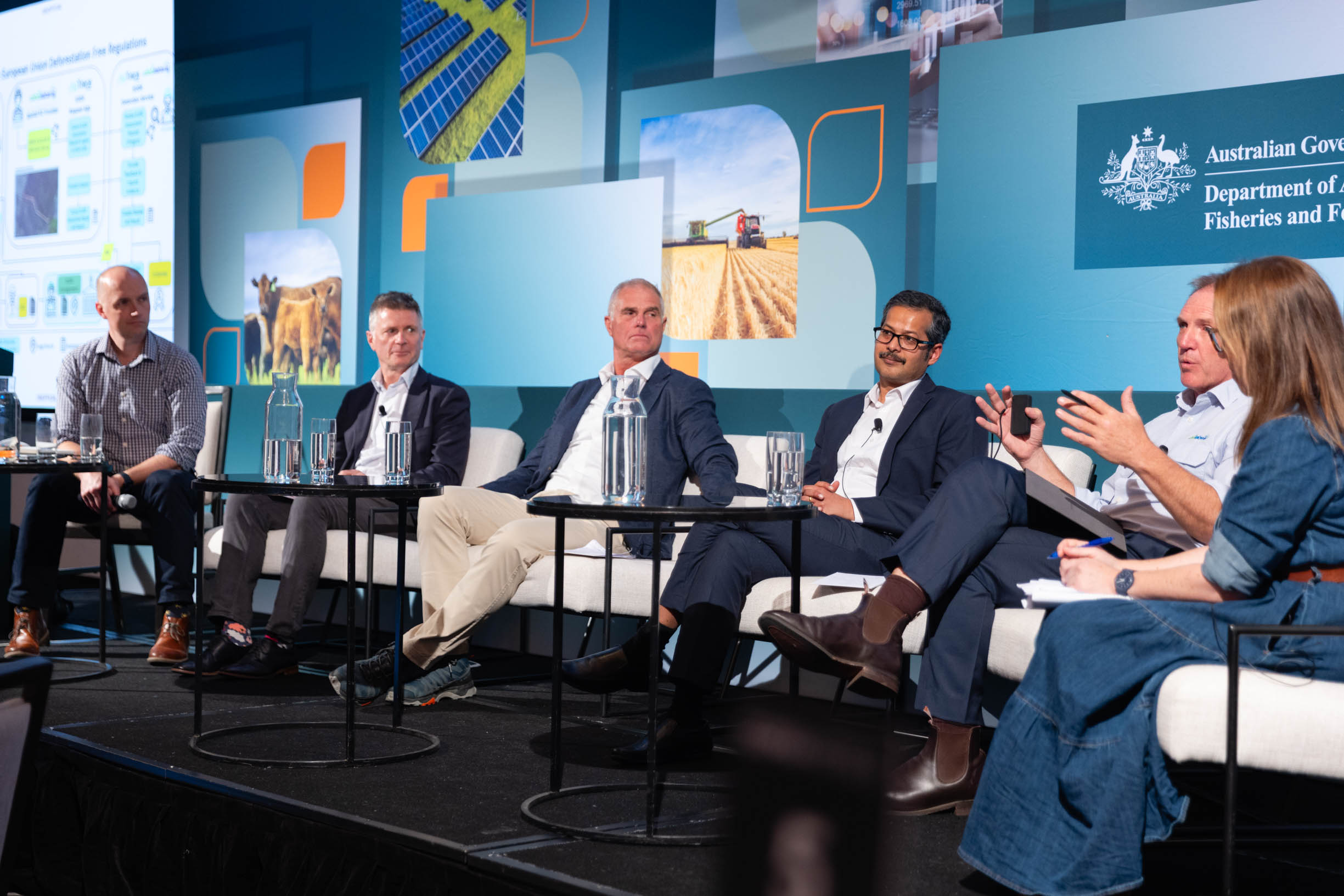
From the Director: March update
March provided the opportunity to connect with colleagues from Australia and the UK at the annual ABARES (Australian Bureau of Agricultural and Resource Economics) Outlook Conference.
The 2025 Conference, which centred on the theme “Insights for Action: Fostering Growth in a Changing World”, included an update on agricultural productivity from Productivity Commission (PC) Deputy Chair Alex Robson. Dr Robson presented PC analysis of Australian Bureau of Statistics data which showed a slowdown in agricultural productivity across all broadacre industries, with an average annual growth rate of just 0.6 per cent. While productivity growth was uneven across the agricultural sector, even the fastest growing industries (cropping had a 1.61 per cent/year increase) are falling short of the rates needed to provide enough nutritious food growing global population.
In his presentation, Dr Robson outlined recent trends in potential productivity growth resulting from the generation of new ideas (i.e. research) and the extent to which businesses implement new ideas. Across the wider economy, it appears there has been a slowdown in both of these factors. Interestingly, the situation in agriculture was more positive, with an uptick in both potential productivities arising from research, and implementation of those ideas. Thus, while there is still plenty of scope to improve the translation of research arising from Australia’s universities, the data reported by Dr Robson suggests that the R&D ecosystem – much of it based in universities – is delivering real value to our agricultural sector. Dr Robson said there was an $8 return for each $1 of R&D investment, with even higher ROI values being reported by Ernst and Young (2019) in their report on agricultural innovation. However, the ability of universities to continue to provide this value – and to contribute to creating the step-change in productivity growth needed to meet future global demands for food – is under threat.
In the past, universities have subsidised the cost of research through international student fees. With current government policies restricting intakes of international students, the business model of universities has reached a crisis point. Other funding streams, from both government and industry, are not enough to fill this gap. Given the multitude of challenges facing Australian agriculture – like climate change, geopolitical instability and population growth – we must continue to advocate for a more ambitious and visionary model for funding agricultural research.
While at the ABARES Conference, I was a part of a panel discussion about the use of satellite earth observation for agriculture and climate resilience. In a world where climate change is increasingly impacting our food systems, the panel brought together scientists from the UK and Australia who are collaborating on projects with the UK/Australia Earth Observation AgroClimate Programme. The session focused on ways in which earth observation (EO) technologies are being used to improve the climate resilience and profitability of agriculture. I spoke about the opportunity to use EO tools such as hyperspectral reflectance sensors to improve yield potential and yield resilience of broadacre crops such as cereals, oilseeds and pulses.
It’s technological advances like these that will be critical to Australian agriculture achieving the productivity growth it needs to sustainably meet the world’s food and fibre needs. This is why ANU and AFII will be making submissions to the Australian Government’s Strategic Examination of Research and Development. Our submission will argue that we can strengthen Australia’s R&D ecosystem by better leveraging the full interdisciplinary capabilities of the university sector to address complex industrial, societal, economic and environmental challenges, and associated national priorities.
In particular, we will advocate for the development of funding models that support the delivery of long-term research programs to address complex challenges. We will also promote the importance of attracting and training the next generation of the agricultural workforce, which will necessarily comprise people with diverse skillsets, from computer scientists and engineers to biochemists and policy experts. It is only by doing agriculture differently that the industry will make the critical step change it needs to continue to grow and thrive.
Finally, in March we bid farewell to our Deputy Director Alison Bentley who has taken a position as Deputy Director, Agriculture and Food at the CSIRO. This is an excellent opportunity, and we wish her well. We also said goodbye to Pro-Vice Chancellor, Research Initiatives and Infrastructure Ute Roessner. Ute has left ANU to become the CEO of the Australian Research Council, recognition of her significant experience and leadership. I look forward to working with both Alison and Ute in their new roles.
